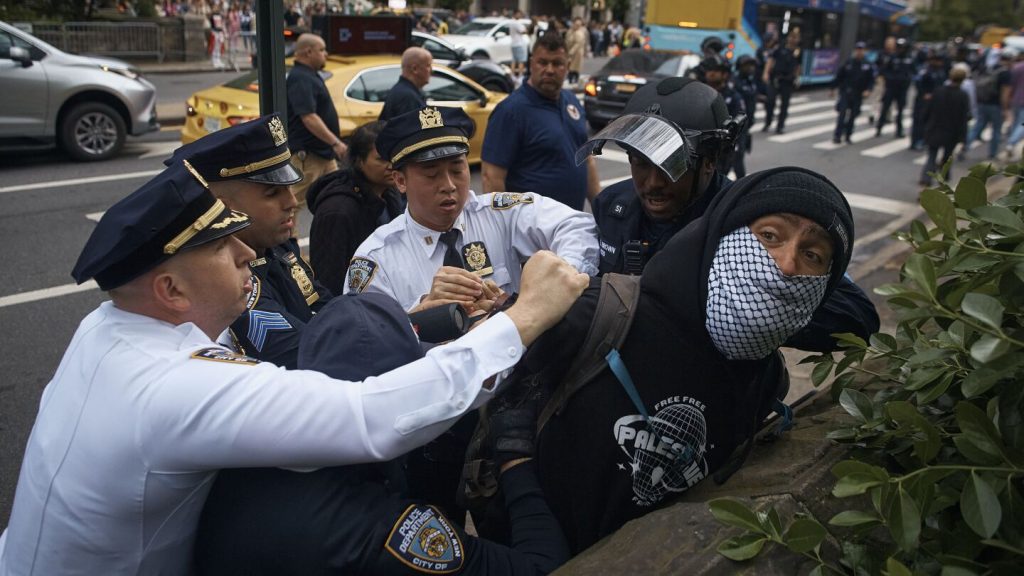New York City Mayor Eric Adams is facing scrutiny from civil rights lawyers after the New York Police Department’s aggressive response to a pro-Palestinian demonstration. Last year, the city settled a lawsuit brought by Black Lives Matter demonstrators with a deal to overhaul how police respond to protests. The reforms included a tiered system of responses that prioritize de-escalation and accommodate most street demonstrations. However, Adams defended the police’s actions at the pro-Palestinian protest, stating that protesters who broke the rules were not entitled to the tiered approach.
There are concerns about the mayor’s commitment to meeting the city’s obligations under the settlement, according to civil rights lawyers. The Legal Aid Society, a party to the federal lawsuit, expressed serious concern about the mayor’s cavalier attitude towards the police department ignoring the terms of the settlement. The settlement, which does not have a deadline for implementation, stemmed from a lawsuit filed by New York State Attorney General Letitia James, highlighting civil rights violations committed by police against protesters in 2020. The new system requires fewer officers at protests and limits the use of heavily armored units without evidence of impending violence.
As protests against Israel have intensified in New York City in recent months, demonstrations have been met with immediate police presence in riot gear. Ahead of a pro-Palestinian demonstration in Brooklyn, police presence was heavy, with officers wielding batons, zip ties, and shields, along with correctional buses for mass-arrest processing. The Nakba Day event in Bay Ridge, Brooklyn, typically draws a small police presence but saw increased intimidation tactics during this year’s protest, according to organizers. The heightened police response led to threats of arrest for protesters congregating in the street or using amplified sound.
During the pro-Palestinian demonstration, officers threatened arrests for various infractions, such as congregating in the street or using amplified sound. The police response included scaling a building’s fire escape to tell a community member to stop playing chants from a speaker in his apartment window. Mayor Eric Adams suggested that many of the protesters were outsiders who sought to radicalize children against the country, despite the event being organized by local groups. The settlement aims to reinforce an NYPD rule requiring officers to maintain content and viewpoint neutrality during protests but has yet to be fully implemented, leaving protesters in a legal gray zone.
The legal team that represented protesters in the 2020 case emphasized the importance of having guardrails in place for constitutionally compliant policing, with the settlement intended to establish those safeguards. However, until the policies are officially implemented, protesters may find themselves navigating a legal gray area where their rights may not be fully protected. The settlement aims to provide guidelines for how police should respond to protests while ensuring that constitutional rights are upheld, but without formal implementation, protesters may continue to face challenges in asserting their rights during demonstrations. The standoff between activists and police highlights the ongoing tension surrounding the right to protest and the responsibilities of law enforcement in upholding those rights.


